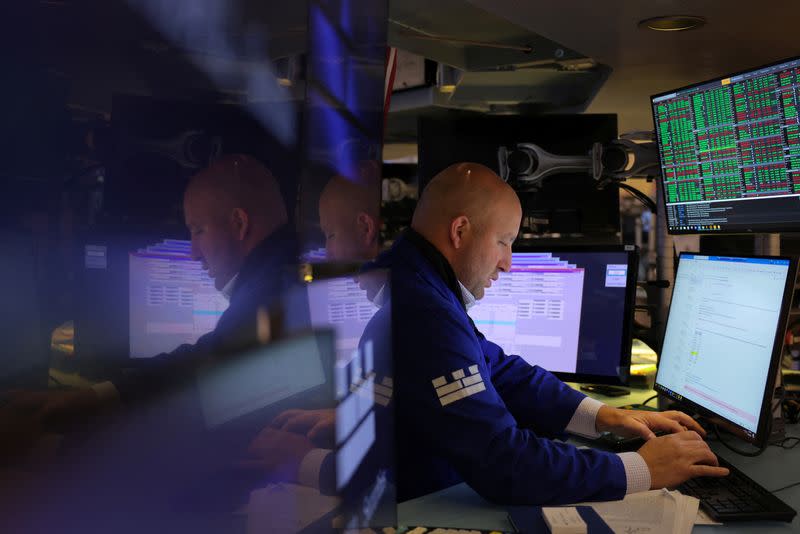By Michael S. Derby and David Lawder
NEW YORK (Reuters) - Federal Reserve Chair Jerome Powell said on Wednesday still strong levels of liquidity in the financial system will allow the central bank to press forward with shrinking its balance sheet even as it has begun cutting rates.
"Reserves are still abundant and are expected to remain so for some time," Powell said at a press conference that followed a monetary policy meeting where the central bank kicked off a rate cutting cycle with a relatively large half percentage point easing, amid expectations more rate cuts loom as inflation ebbs.
Powell was addressing the process of what's called quantitative tightening, or QT. That entails the Fed drawing down liquidity it added via bond purchases during the pandemic, a process which has thus far shrunk overall holdings from a peak of $9 trillion in the summer of 2022 to the current size of $7.2 trillion.
The drawdown, which the Fed slowed earlier this year, currently entails allowing up to $60 billion per month in Treasury and mortgage bonds to expire and not be replaced. The QT process began amid aggressive Fed rate rises aimed at quelling inflation pressures.
Fed officials have said repeatedly that they see QT as a background process and that changes in interest rates are their main tool to affect the economy. QT differs from quantitative easing, or bond buying, as that process generally takes places amid unsettled markets and seeks to bolster monetary policy potency when rates are near zero.
Some analysts had speculated that if the Fed went for a half percentage point rate cut it might accelerate an end to QT, to better align the full scope of the Fed's toolkit. Doing that would avoid the complicated optics of having rate policy ease even as its balance sheet policy technically tightens financial conditions by allowing long-term yields to rise.
In the press conference, Powell noted that the bulk of the drawdown has left bank reserve parked at the Fed largely untouched and has instead stripped cash from the reverse repo facility. Reserves have hovered right above the $3 trillion mark since June 2022.
Meanwhile, reverse repo inflows have seen money funds go from parking over $2 trillion per day at the facility to $305.8 billion on Wednesday.
The reverse repo facility has long been viewed as a vehicle to hold excessive liquidity, so its drawdown has been expected by Fed officials. When reserves begin to fall that bears more directly on Fed policy aims of having just enough liquidity in the financial system to afford it firm control over its interest rate target while allowing for normal market volatility.

